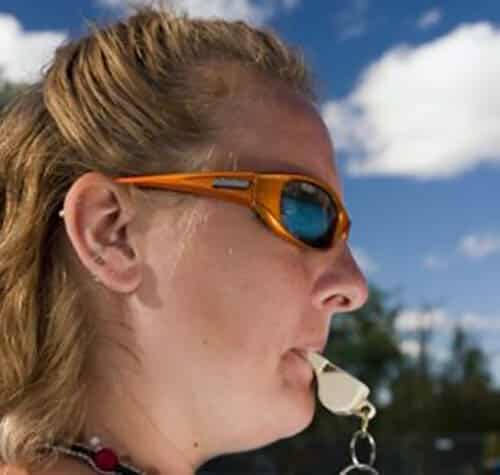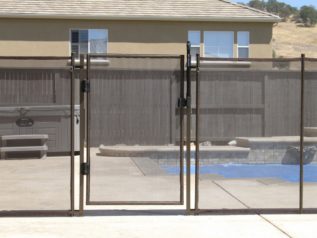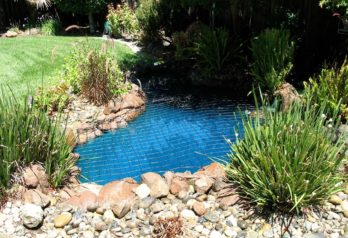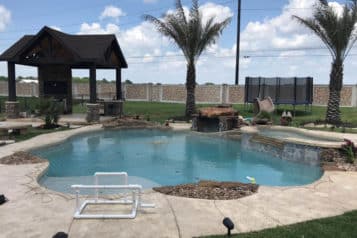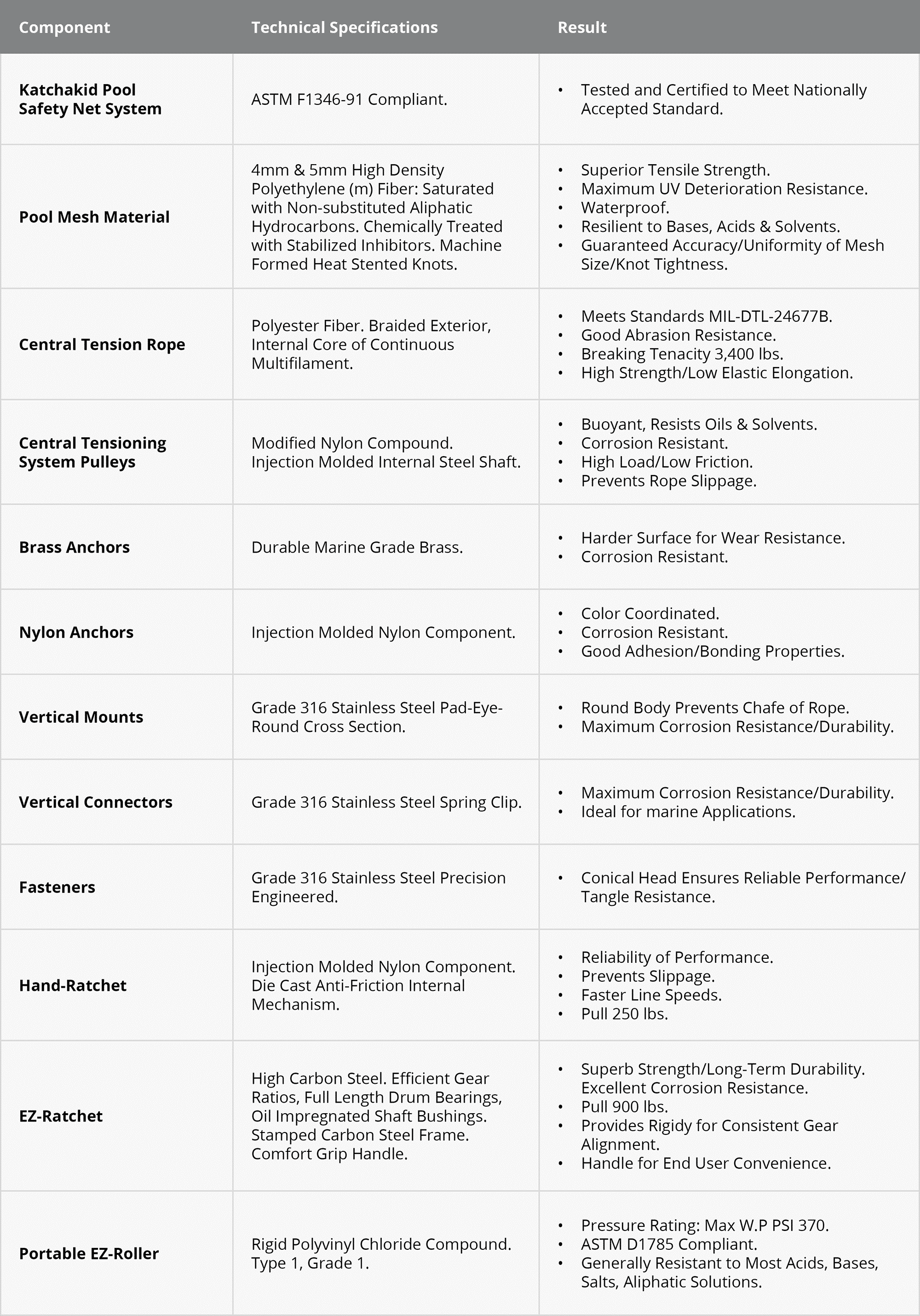Cannonball competition; Fly off the waterfall; Longest jump over little brother; Duck!
Summertime and everybody heads for the backyard pool. It’s every kid’s dream and every mom’s nightmare! We don’t want to ruin the fun of summer. But how do we let them have fun and at the same time keep them from ending up in the ER with stitches in their head or worse?
Nobody wants to be called a spoil sport or mean mom. Wait. That’s not quite true. The answer to allowing the dream while preventing it from becoming a nightmare is actually to be just that; a mean mom; a “mean pool safety mom”!
What is a “mean pool safety mom”? The concept is the result of a meeting between 2 San Diego moms: Mean Mom’s Club President-Maureen LoBue and the Pool Safety Mom Mary Ann Downing. Each has the same goal: take charge to keep our kids safe by setting realistic boundaries and enforcing those boundaries. A mean pool safety mom knows the ABCs of drowning prevention, and follows three simple steps to create and enforce a safe summer in the water.
These three steps are built on the two most critical focuses of a mean mom: safety and structure.Mean Mom’s Club: The Mom’s Rule Book*, a reference guide to becoming a take charge mom based on these two focuses, translates perfectly to becoming a mean pool safety mom.
The President of the Mean Mom’s Club is prepared to deputize all moms as “mean pool safety moms”, by following these three steps:
First, know what safety means at different stages of development. “See ‘em to save ‘em” should be the underlying theme, adjusted for each stage**.
• Toddlers – keep them from hurting themselves as they start to venture out on their own in their physical world. Keep toddlers away from danger – the street, the stairs, the stove, and especially the pool. Keep that pool closed any time it’s not supervised and follow touch supervision: “If you can’t reach them, you can’t save them”. Toddlers are faster than a race car driver on the Indy 500. So, keep them securely away from the pool and within arms reach in or near the pool.
• Pre-school kids – allow them to use their imagination while keeping them in reality when it counts. The pool safety rule “never swim without a grown-up” is key, with the supervising adult in or by the poolside. Mary the Pool Safety Mom recalls pre-schoolers in beginner swim lessons nodding, yes, they would jump in like a lifeguard to save someone. A mean pool safety mom knows that no matter how many lessons, no child is drown-proof!
• School-age kids – give them guidelines for how far they can venture out not just physically, but also socially. Every kid knows the fire safety rule “stop, drop and roll”, but the pool rule they seem to remember…”don’t pee in the pool”. Explain water safety rules clearly, such swimming only with an adult, and enforce them without fail. There can be no idle threats. When a friend dares your kid to jump over little brother, he should respond with “No way! You can’t get away with anything with MY mom!”
• Teenagers – keep them from situations that will require them to make judgments they’re not ready for. When the friend says it’s ok to go in the pool without an adult, it is tempting to follow along because of peer pressure and because teens see themselves as omnipotent; accidents won’t happen to them. Well accidents do happen when teens do dumb/stupid things, like dive into shallow water or off the waterfall. When teens are injured others may not even realize the person is hurt or the extent of the injury.
Second, set boundaries to keep them safe. Pool safety requires layers of physical barriers and protective boundaries. Building code often requires, and experts in drowning prevention recommend, a fence that separates the pool from the house, a pool safety cover and alarms***.
Close the pool. That sounds easy enough. But leave it to kids to find the gray in that black and white statement. The pool is closed means no one goes in the water. Imagine Mary the Pool Safety Mom’s surprise looking out on the “closed pool” to find her honor roll Girl Scout floating leisurely on a blow up raft catching a few rays. On confronting her with the boundary rule to not go in the pool or in the water, the response was…are you ready for this?…“I wasn’t in the water, I was on the raft!”
The moral of the story is that it is up to the mean pool safety mom and dad to truly close the pool. Use layers that completely block access to the water. Install a fence with a self closing self latching gate, or a safety cover that meets American Society for Testing and Materials (ASTM) standards. Use alarms on doors leading to the pool, around the perimeter of the pool, in the pool or on the kids. Remember how fast, imaginative, and adventurous they are.
Third, create a safety plan for the open pool and stick to it, even when that makes you a “mean mom”. That’s your job! The plan must include:
• Water watcher duty – Designate an adult to oversee the pool at all times. That means eyes on the water, not on the grill, but on the water and each person in or near the water. He/she needs to be able to perform a rescue if necessary, which rules out great grandpa who would need to shuffle to poolside with his walker. The designated water watcher is the lifeguard. Hey great idea for the next pool party – hire a lifeguard.
• Know the swimming ability of each person. If you ask a kid if he can swim, what will his answer be? Of course it will be yes. Know what their skills really are. Then if you see the poor swimmer getting into deep water you can respond before they get into trouble.
• Set rules based on ages/abilities of the swimmers that will protect them from themselves (remember the developmental levels in step 1). But remember to pick your battles. No need to break up every splash-fest, but prevent behavior that could be injury causing.
• Put on life jackets rather than the cute little arm floaties that are likely to float away without the little swimmer.
• Have the proper equipment, know how to use it and reach it immediately. A rescue/life hook is a great $20 idea for every pool. Let’s face it; you may become the lifeguard in a crisis!
• The pool must be safe and the water clear. Ask your pool expert to check the drain covers. This is a critical safety issue and must be routinely checked to prevent tragic injuries and drowning caused by entrapment or suction.
• Have an emergency plan. We don’t want to believe that it can happen, but we know that in fact it can. Over 80 California children ages 1-2 drown each year (CDC 2005). Moms should know CPR and first aid. Be sure someone at the pool can perform CPR. Know who would call 911 if
necessary, and use the house phone so that the 911 operator can track the location of the call.
It’s just not enough to say “watch the kids by the pool”. Follow the ABCs; Adult Supervision, Barriers, and learn CPR and how to swim. Follow the three steps; know safety at each stage, set boundaries, and create a safety plan for the open pool.
And now you can be the best prevention of all by becoming a mean pool safety mom.
Excellent prevention resources are available to prevent swimming pool and drowning accidents+
* The author, Maureen LoBue, M.Ed., has combined both personal and professional experience to create Mean Mom’s Club: The Mom’s Rule Book. The purpose is to provide a common sense foundation for parents to take charge of any given situation by using the rules to plan ahead. The 7 rules prepare parents to deal with situations at different ages for different children, using their own parenting style.
Contributing author is “Pool Safety Mom” Mary Ann Downing, the owner of Pool Safety Solutions in San Diego CA. Since 2003, Mary has been meeting with pool owning parents to help develop backyard pool safety strategies with awareness and equipment like Katchakid’s removable pool safety fence and pool safety net. Mary’s aquatic background began decades ago with the American Red Cross and YMCA. She is a member of the National Drowning Prevention Alliance, Drowning Prevention Foundation, IPSSA and SafeKids San Diego.
Contact Mary at marydowning(at)san.rr.com.
** Texas Dept of Family and Protective Services, www.seeandsave.org
*** The “Drowning Prevention Foundation, www.dpf.org
+ Consumer Product Safety Commission, http://www.cpsc.gov
California DDS, http://www.dds.ca.gov
American Red Cross http://www.redcross.org
ABCs of pool safety http://www.watersafe.org/abcs-of-water-safety
YMCA http://www.ymca.net
USLA http://www.usla.org

